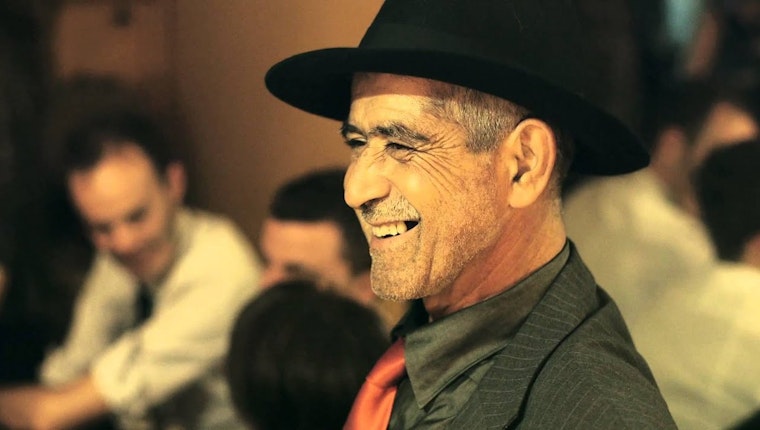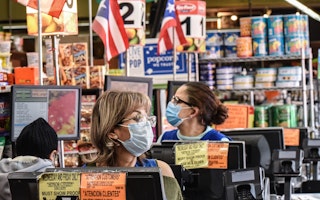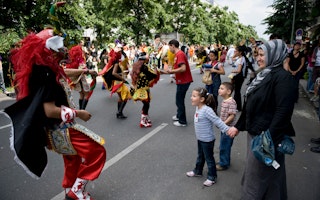On the Bride’s Side: A Conversation with Filmmaker Gabriele Del Grande
By Antonia Zafeiri

The documentary On the Bride’s Side details the journey from Milan to Stockholm by five undocumented Syrian and Palestinian refugees fleeing the war in Syria. The refugees and their supporters traveled as a fake wedding party complete with a bride in a white gown, hoping to avoid detection and arrest. We spoke with one of the directors, Gabriele Del Grande, about the film.
How did you come to be involved in making a film about refugees?
It happened by chance. I live in Milan which has become a gathering point and transit hub for Syrian refugees. They come here straight from the coast and travel on to their final destination elsewhere in Europe. You can tell the refugees because they all have sunburnt noses from their time at sea.
This was October 2013. I had been in Syria until September, and my friend Khaled [Soliman Al Nassiry] and I wanted to help some of these people. We were in the station and a man overheard us talking in Arabic. He asked us which platform the train for Sweden left from. I told him that unfortunately there was no such train, but we’d be happy to buy him a coffee and talk.
We quickly became friends with this man, Abdallah. He had survived the terrible shipwreck off the island of Lampedusa, when more than 350 refugees had died. Khaled and I said we had to do something for him, and we talked to Antonio [Angliaro] and came up with the idea of the fake wedding and the film. Antonio is a filmmaker, I am a journalist, and Khaled is a writer and a poet, and we combined our skills to make the movie.
In the film, Abdallah talks about the refugee ship sinking. It’s such a powerful scene.
At this point the high seas were not being patrolled and there were two devastating sinkings in the same month. Now with the Mare Nostrum policy, the Italian Navy is picking up refugees far from the Italian coast and bringing them to Sicily or the mainland and not to the island of Lampedusa, which is causing political problems with the xenophobic parties in the north of the country.
The passage is still extremely dangerous.
It is. People come to Italy from North Africa, the Horn of Africa—Eritrea and Somalia. Since the war started, half are from Syria. It is very difficult to get a visa to travel to Europe from these regions, so the only way they can escape a war, or look for a better life, is to take to the ocean. And because they have no documents, they have to pay a trafficker to take them to a sympathetic country like Germany or Sweden.
What is the solution?
We must allow people to travel. If Europe had a common system of asylum, and refugees were free to move from one country to another, they wouldn’t have to put themselves in the hands of the smugglers.
We have the experience of the Balkans, and the liberalization of movement from the new member states of the EU. Albanians used to need a visa to come to Italy, and thousands used smugglers to get here. Then the rules were changed. Now we have more than 100,000 people coming here across the sea when we could be issuing visas.
You believe that Europe has a responsibility to help these people?
Of course. Syria is a neighbor, and the war has caused seven or eight million people to become refugees or displaced people. Our Interior Ministry says that 11,300 Syrians came to Italy in 2013 by boat, and only 600 applied for asylum. The rest went somewhere else in Europe. This is a tiny percentage, and apparently we cannot supply them even with a minimum of services.
To me it is very simple. If my neighbor’s home is burning, I open my door. There’s nothing to consider—you let them in and figure out how you can share what you have later. If you shut the door, the neighbor is going to die.
We have the war in Syria, war in Gaza, war in Libya, the war against the Islamic State. The region is in a perilous state. I’m not just an Italian; the Mediterranean Sea is part of my identity and it has two shores: north and south. It’s my sea, these are my people, and we have to show solidarity.
I’m not the government, so I don’t make the decisions. But I know a lot of people feel the same way I do. The film proves that—we were supported by the biggest crowdfunding campaign in Italy.
There’s a strong sense from the film of people coming together to help, notably the bride herself, Tasneem Fared. Tell us about her.
She describes in the film how she stayed behind in Syria to continue her work as an activist even as her friends were being killed. She has a German passport and could have left at any time. When she finally left, we asked her to be our bride and she accepted.
She talks about living in Syria in this war. Despite all the death and destruction, there is so much life, she says. I want that to be the message of the film. More than 20,000 people have died on the Mediterranean in the last 20 years. But we are alive, and we have to fight to change what has happened. The Mediterranean should not be the mass graveyard it has been, but a sea of life and of peace.
The Open Society Foundations have previously supported director Gabriele Del Grande and his blog Fortress Europe. On the Bride’s Side was entirely crowdfunded and premieres in Italy on October 9.
Until April 2016, Antonia Zafeiri was a European communications officer at the Open Society Foundations.


